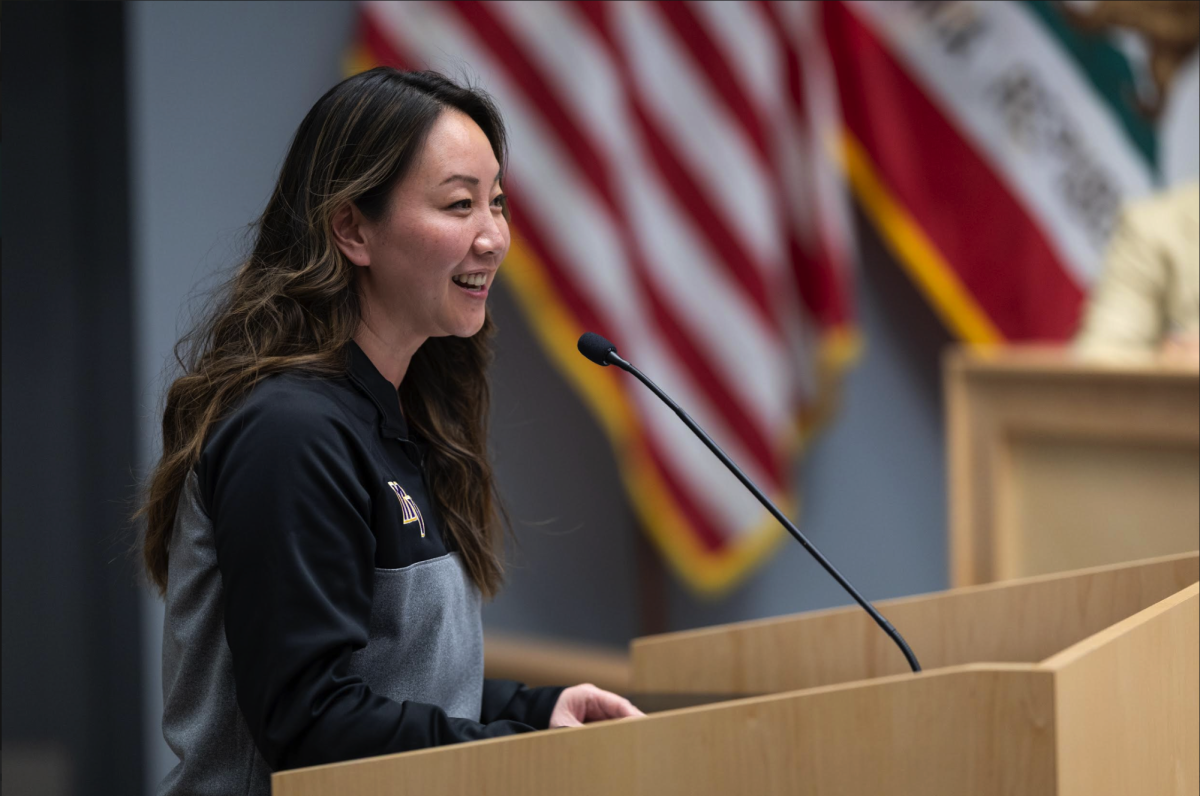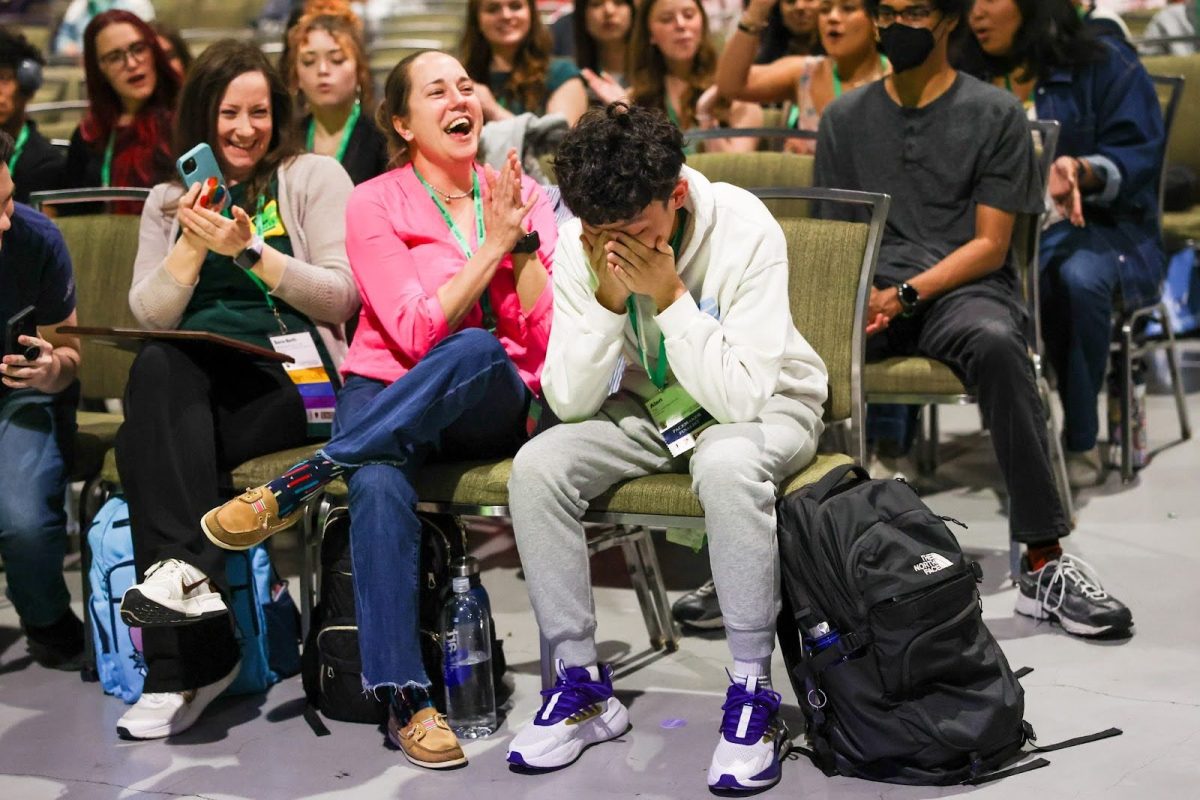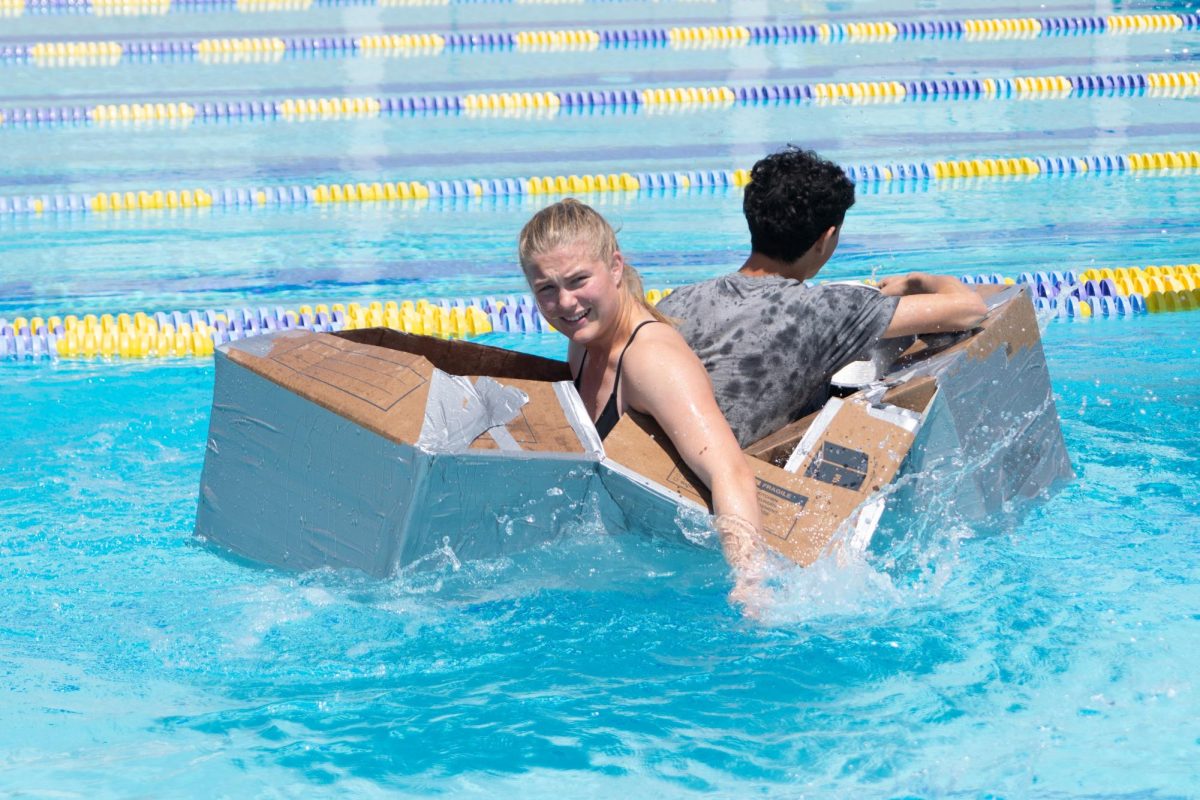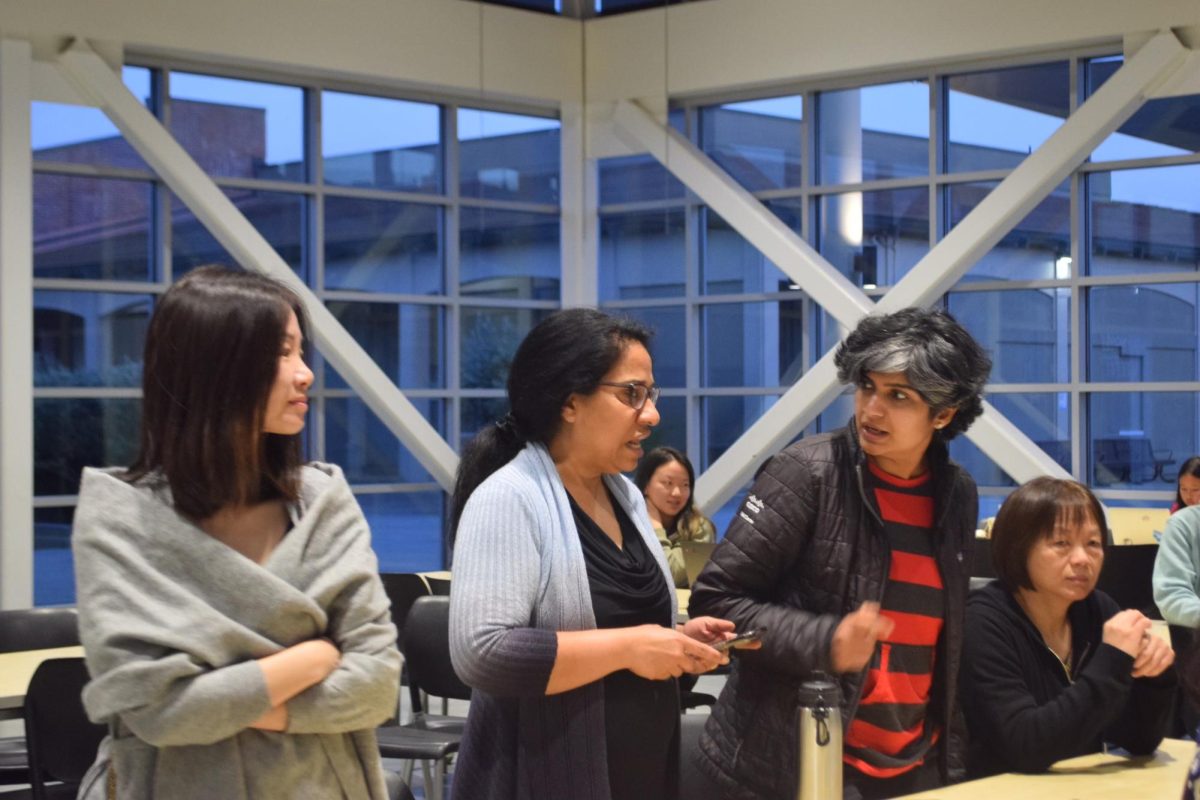ale Barcellos, Photo, Advanced Multimedia and Commercial Art teacher, was a
— but since his departure in June 2014, art and photography teachers Brian Chow and Tyler Cripe are doing their best to fill the gaps Barcellos has left in his absence.
“Mr Barcellos was a big piece of our department,” Chow said. “It was like a five piece puzzle, and we are all aware of each other’s abilities and skillsets, but then when one piece is gone, you can never quite fill it. You can maybe try to frame it out, but there is stuff in the middle we never quite filled in yet and maybe never will.”
Barcellos has left big shoes to fill, but Chow and Cripe are doing the best they can to make sure Commercial Art and Advanced Multimedia can still give students the experience they wanted to take away from the classes.
Commercial Art and Advanced Multimedia with Barcellos
Barcellos has had a rich history in print media, as well as interface and game design, and he still keeps in contact with Cripe and Chow to guide them in the right direction.
Before he retired, Barcellos taught Commercial Art and Adv. Multimedia as enrichment classes — giving students exposure to all the basic techniques needed for these two fields of study, and letting them apply their knowledge in second semester on their own projects. His experience in the field translates to the classroom, in his teaching style and to his core beliefs in how to prepare students for a job in these two fields.
“Anyone who sees themselves as a designer should have a knowledge of both computer and print design, but the principles are pretty much the same, ” Barcellos said, “There’s a difference in resolution but that’s a minor difference. Typography is still typography is still the same wherever you apply it.”
The New Format
Barcellos, according to Cripe, focused more on 3D modeling and game design because he had a rich, in depth experience in that field. Cripe, on the other hand, is still trying to familiarize himself with game design and 3D modeling, so he has taken a different tactic in the beginning of the year to give himself more time to learn. Cripe polled the class in the beginning to give students the freedom to choose what they wanted to gain from Adv. Multimedia and how they want to structure the class. Most of his students wanted to get better at Photoshop or Indesign, widely used programs for multimedia.
“I leave it up to the students though,” Cripe said, “Some students go into game design, some students are really into sound design, and some students are more like film makers. It is a class where everyone gets to decide what they really want to focus on.”
Another class Barcellos taught was Commercial Art, a class now covered by Chow, Art 3 to Art 4 and Photography 1 to Photography 2 teacher.
“I have a design and commercial art background — not to the extent Mr. Barcellos did because he did that for 25 years as part of his profession, but I have some of the skillsets that would also relate to it.” Cripe said.
Chow said the class would be separated into two different, more focused “strands”. There would be the graphic design element, which is used in visual communication — commercial art is about the visual experience and how the user interacts with it, according to Chow.
Then there is the the industrial design part of it, which according to Chow is more construction oriented, where artists blend multiple mediums of art together in terms of design and presentation in order to explore the front and back process of producing a product. Design, as a whole, is going to be a major idea embedded throughout the entire course.
“Barcellos structured the class mostly around print graphic design, which is good skill sets, but a little more narrow focused.” Chow said, “With our digital era and digital world, [advertisement] moves at a much different pace now.”
Adjusting to the Changes
Cripe and Chow have worked closely with Barcellos for many years, so both had to adjust in order to fill in the gaps.
“We had a very collaborative sort of relationship,” Cripe said, “He taught photography classes too so I had a chance to talk to him everyday. When it became clear that [Chow] and I were going to take over his classes, we made a plan with him and took an idea of what he was doing, and how everything operated.”
Advanced Multimedia and Commercial Art share the same computer lab, so Chow and Cripe also have to engineer the room in a way where they are both comfortable.
“Every time you have a different teacher things are going to be done in a different way,” Cripe said, “so we are both doing things in a way where we are comfortable.”
Fundamentally, things are not different, according to Cripe. He believes the same idea and principle of the class won’t change with Barcellos’ departure.
“Trying to keep an eye on the past, and what worked very well, but also keeping an eye on the future and what needs to change, and evolve…That is a big challenge in and of itself,” Chow said.
In the Newly Structured Classes
Right now, Chow’s class is focusing on font design, according to junior Emma Lennen, who is currently taking Commercial Art. Font design is used for many aspects of commercial art, such as t-shirt making.
“We are creating monograms of our names,” Lennen said, “And we are experimenting with positive and negative space. We tested out different fonts, different shapes, until we found one that we liked.”
Monograms are two letters, put together in a shape to create a badge, or a symbol. This is all being done on Adobe Illustrator, and Lennen says one of the benefits of virtual design is being able to test out what colors or what fonts work without having to redraw the image every single time.

“For the computer, some of the difficulties are you want to make it a certain way, but you don’t know how to make it a certain way.” Lennen said, “But when you do it by hand you have to be really careful about details and it is a lot harder to make multiple copies […] You would have to redraw every single one.”

Barcellos’ Lasting Impact
While classes have changed under Chow and Cripe, they still have both learned a lot from Barcellos and his teaching style.
“One of the things I’ve always appreciated about him was his perspective and, of course, his experience,” Chow said.
When asked what he respects about Barcellos, the first thing Cripe said was his teaching style and how he always looked at the bigger picture.
“He loved teaching so much … he didn’t get locked up the little things in trying to teach a kid a certain part of something, or get frustrated when they wouldn’t learn something the way he wanted to. He always held onto a bigger picture that if they are healthy, if they are happy, then they’ll learn.” Cripe said.








